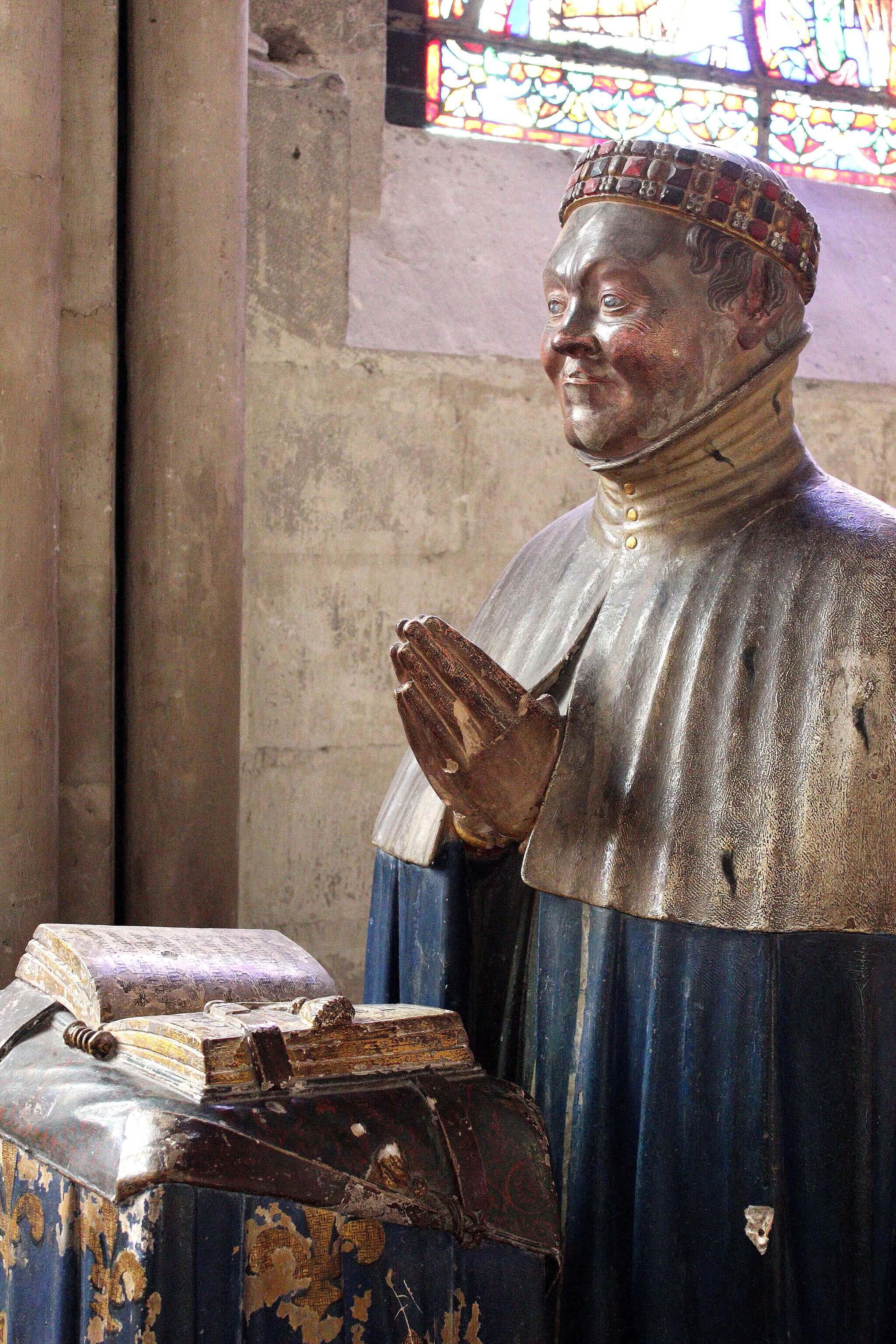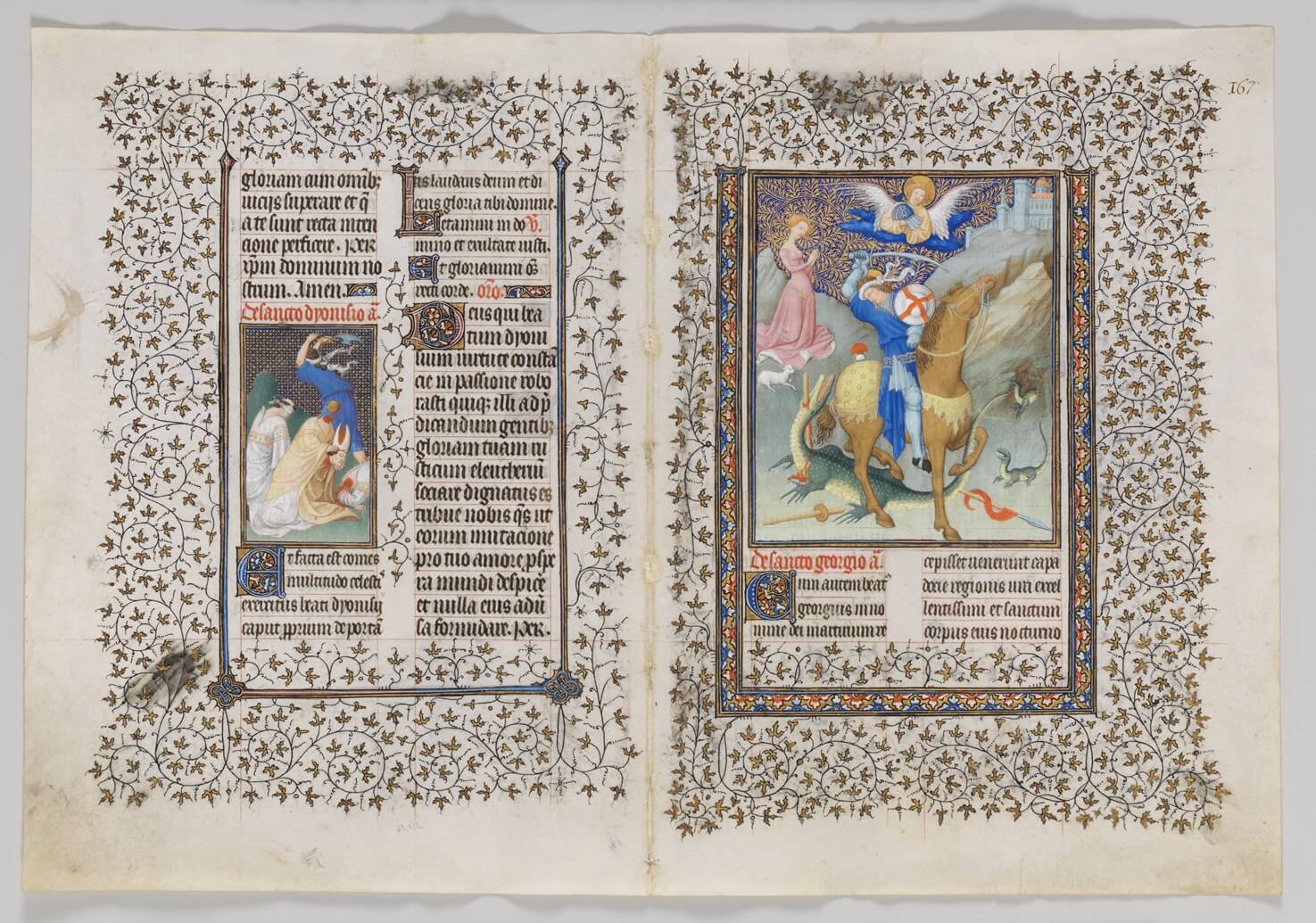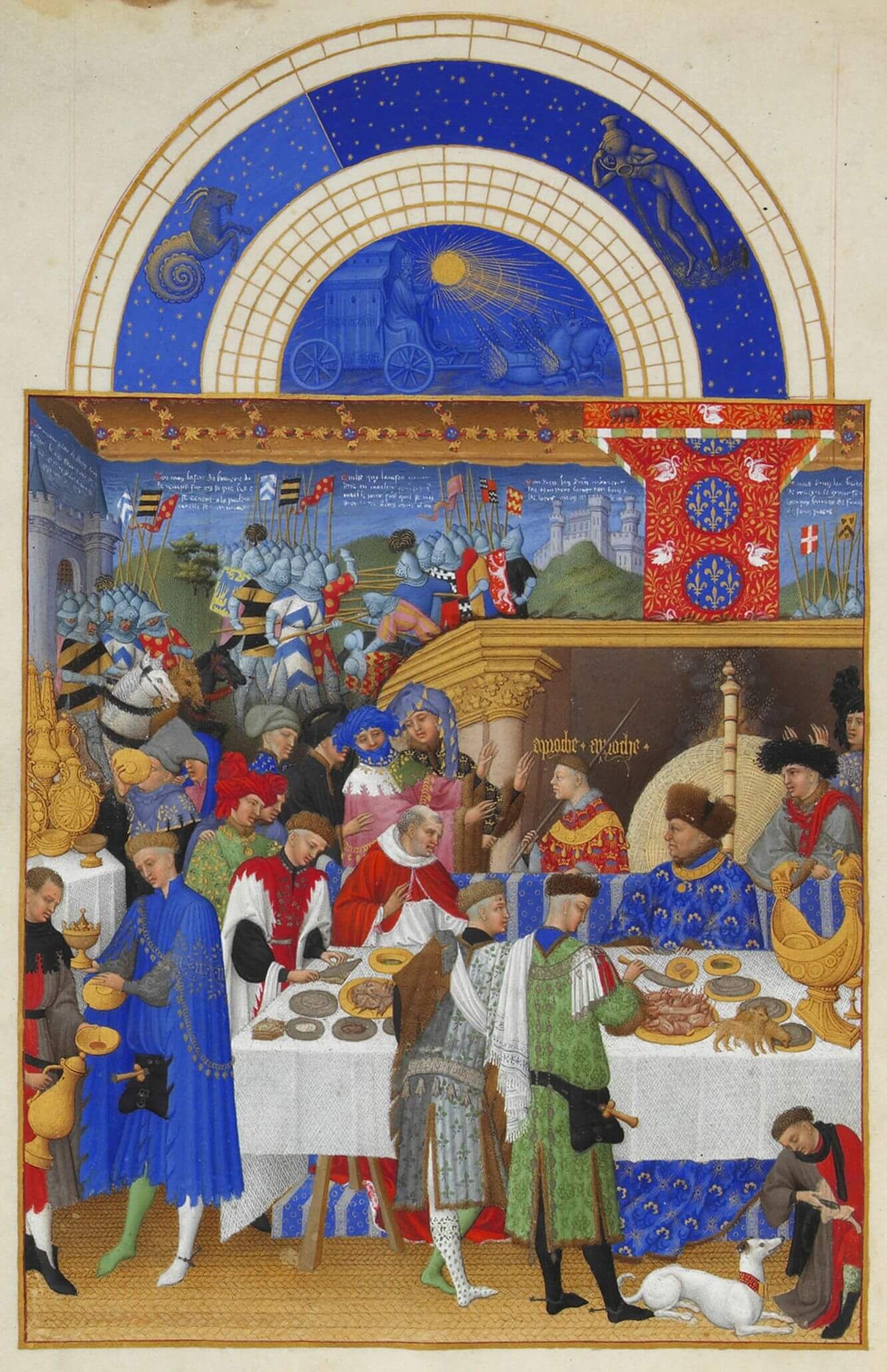Welcome to 31 Days of Medieval Manuscripts, a month-long series introducing the fascinating and brilliant world of medieval illuminated manuscripts.
Instead of focusing on a manuscript or a component of one, I’ve chosen to write today about one of medieval history’s most famous and prolific manuscript collectors. Jean de Berry (1340-1416) was a French duke and the brother of King Charles V of France. An extremely wealthy and well-connected nobleman, Jean de Berry collected all sorts of artwork – including sculpture, tapestries, precious art objects, and castles – in vast quantities, but he is best-known for his collection of about three hundred illuminated manuscripts.1

The Belles Heures and the Tres Riches Heures
Of the Duc de Berry’s manuscripts, the two most famous are the Tres Riches Heures (French for “Very Rich Hours”) and the Belles Heures (“Beautiful Hours”). Berry commissioned both books of hours from the Limbourg brothers, celebrated manuscript artists of Netherlandish origin. The Tres Riches Heures now reside at the Musee Conde in Chantilly, France, while the Belles Heures are at the Met Cloisters. I was lucky enough to see the Belles Heures unbound and with all its significant pages on display at the same time during the Met’s 2010 The Art of Illumination Exhibition. It was pretty incredible.
These manuscripts certainly live up to their names. Their level of detail and decoration is much greater than in many of the other manuscripts we’ve looked at this far in the series. Almost every page of the unparalleled Tres Riches Heures includes an illustration of some sort; many are at least half a page in size. It also utilized great quantities of blue paint, which was highly expensive at this time and thus a sign of a patron’s wealth. While the Belles Heures is slightly more modest (but only when compared to the Tres Riches Heures) , but every page has a thick, elegant, leaf-patterned border with lots of gold.

Neither manuscript shows any attempt at utilizing an economy of materials, as the decoration generally takes up much more space that the text. A few posts ago, I reminded you that illuminated manuscripts are books first and foremost, but I would suggest that we think of these two manuscripts primarily as works of art. In addition, the manuscripts are full of references to Jean de Berry’s wealth and status, including depictions of his castles in the back of landscape scenes. The Duke’s likeness even makes a cameo appearance in the image below.

The Duke’s Collection
In addition to these two great books of hours, the Duke of Berry commissioned many others, such as the Grandes Heures (Large Hours) and Petites Heures (Small Hours). He also owned numerous other types of manuscripts, including other religious texts, romances, works by classical authors, and books on history, science, and philosophy.2 Not all of them were bespoke creations, however. The Duke was also a voracious collector of existing books and artworks, including some celebrated manuscripts that were already centuries old at the time. As a highly influential nobleman with a known love of books, the Duke also tended to receive some pretty high-status manuscripts as gifts.
His massive collection did not survive him intact, so his artworks and manuscripts are scattered in museums and other collections throughout the world. However, several surviving inventories give us a good sense of what he owned and allow scholars to identify specific works that were once among his holdings.3 In honor of the Duc de Berry’s collecting prowess, he was one of twelve famous manuscript enthusiasts profiled in Christopher de Hamel’s The Manuscripts Club: The People Behind a Thousand Years of Medieval Manuscripts.
You can page through the Tres Riches Heures here and see highlights of the Belles Heures here.
Notes
- Husband, Timothy B. The Art of Illumination: The Limbourg Brothers and the Belles Heures of Jean de France, Duc de Berry. New York: The Metropolitan Museum of Art & New Haven/London: Yale University Press, 2008. P. 12-22. ↩︎
- Ibid. P. 22-23. ↩︎
- de Hamel, Christopher. The Posthumous Papers of The Manuscripts Club. Allen Lane/Penguin Random House, 2022. P. 50-91. ↩︎
Related
Expert guidance for your next art museum adventure

